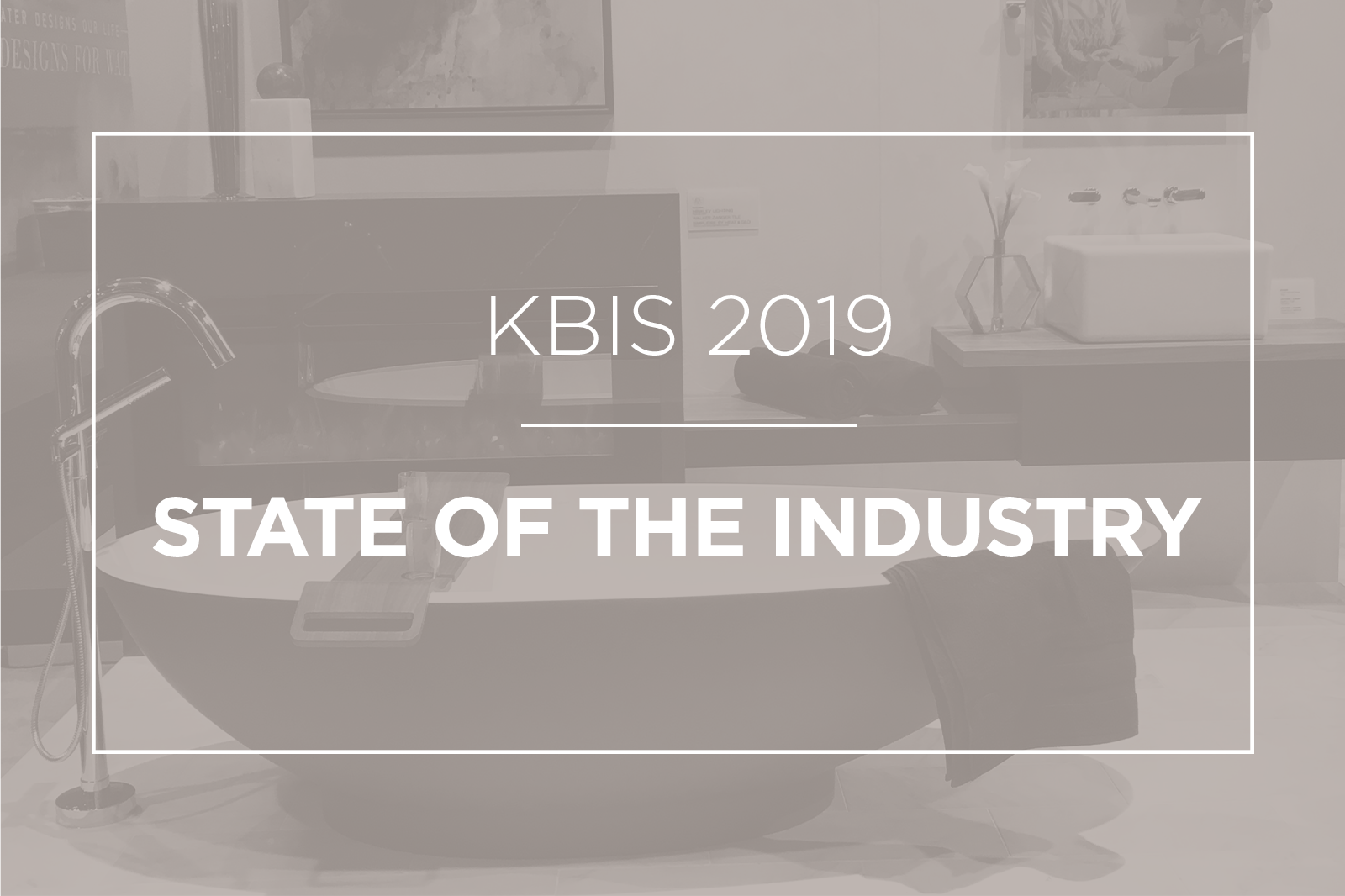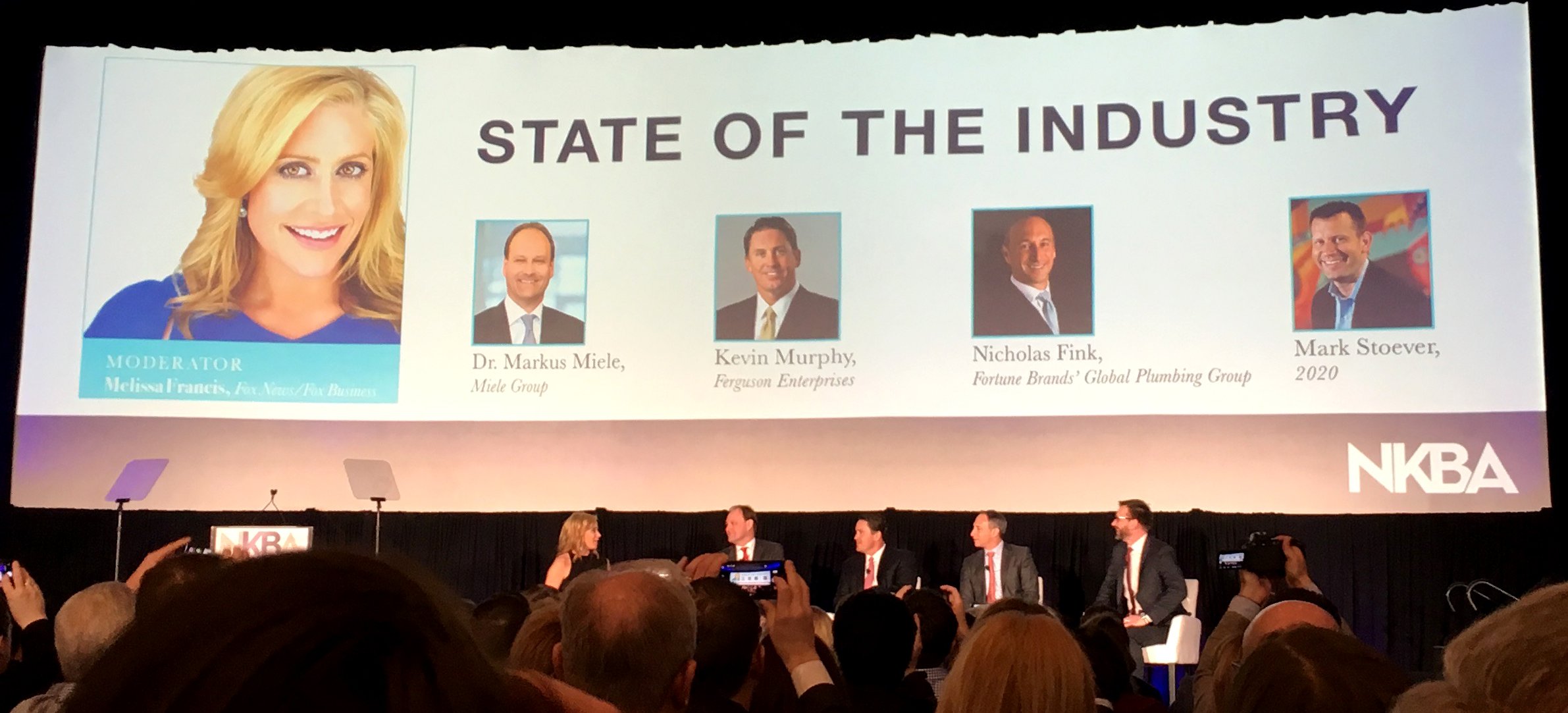
Imagine life without a kitchen or bathroom…not a pretty sight, is it? These vital parts of the home are often taken for granted, but not at KBIS! Here’s what you need to know about the role of this massive industry in the marketplace—and in our lives as consumers (and marketers).
With consumers no longer heading straight into showrooms, K&B marketing teams are looking for innovative solutions to lead customers to their final purchase. But before starting from square one, here are some industry updates that can help you form a plan.
Day two of KBIS 2019 kicked off with a panel discussion on the current state of the kitchen and bath industry. The talk featured four leading industry professionals and was facilitated by Fox News/Fox Business anchor Melissa Francis. Together, they addressed the current challenges for the industry, as well as expected points of growth in the coming year.

Of the building industry as a whole, these kitchen and bath professionals claimed the rights to “bringing creative ideation straight to consumers, through physical appliances that they use every day.” Meaning, this $158 billion industry is not only functional, but creative. It is home to a myriad of jobs in diverse fields from design to plumbing to sales, and that is something to be celebrated and capitalized on. Here are three topics that were hot not only during the discussion, but also throughout the week as well.
Topic 1: Customers expect more, faster
We all know the kitchen is the home’s centerpiece; it’s where life happens.
And your bathroom isn’t just a place to, um, take care of business—it’s a spa-like retreat! While the evolution of these spaces presents exciting opportunities for those in the industry, it comes with its own set of challenges, especially regarding the proliferation of smart home technology.
The panel discussed how smart products, while handy, are also habit-forming—meaning individual consumers come to expect more from them the more they use them. This puts manufacturers at a crossroads: do they try to keep up with ever-increasing demands in product functionality as quickly as possible, or do they spend more time developing their technology, producing a more reliable product at a slower rate? There are pros and cons to each solution, and the answer will be up to individual companies as to how they plan to deliver their promise to consumers. (See some of our favorite smart trends from the show!)
Topic 2: Addressing the labor shortage
The severe lack of individuals employed in trade fields is an ongoing issue that finally seems to be getting the attention it deserves, starting at this year’s show.
Skilled labor professionals are invaluable to the industry; they construct spaces, install and service products, and so much more.
Plus, consumers are willing to pay a little extra for a job done right the first time.
The panel highlighted scholarships, programs, and other initiatives to drive employment growth among the trades. There are also plans in place with existing industry professionals to accomplish the following:
-
Spark excitement in K–8 students with class visits and career fairs.
-
Participate in job shadowing programs and school partnerships that help high school students review career opportunities.
-
Educate students and parents on lucrative and successful career opportunities attainable without an expensive college degree.
Topic 3: Updating the marketing approach across the industry
It’s no secret that a consumer’s path to purchase is no longer direct. In this still “hands-on” industry, how can one be of service to consumers if they’re no longer coming straight into the showroom? The panel consensus: adopt an omnichannel approach. Each digital platform is built to do a different job. When you direct specific messages to each, you can meet your consumer every step of the way. For example, Pinterest is best for gathering inspiration, while Twitter is great for quick facts and info.
Industry leaders recognize the power of leveraging many platforms in order to increase the chances of becoming the final stop on a consumer journey.
Though you may not know when or how often your consumer will visit each channel, the content must be there to meet them when they arrive, guiding them on their way to purchase.
Cool ways to implement this approach include digital end-user awareness campaigns and alternative content like video, podcasts, and experiential virtual reality.
A Future as Bright as a Shiny, New Faucet
All panelists were in agreement that it’s a great time to be in business in America and the K&B industry is no exception. Though it brings new challenges for marketers, the future of kitchen and bath is still very bright.




